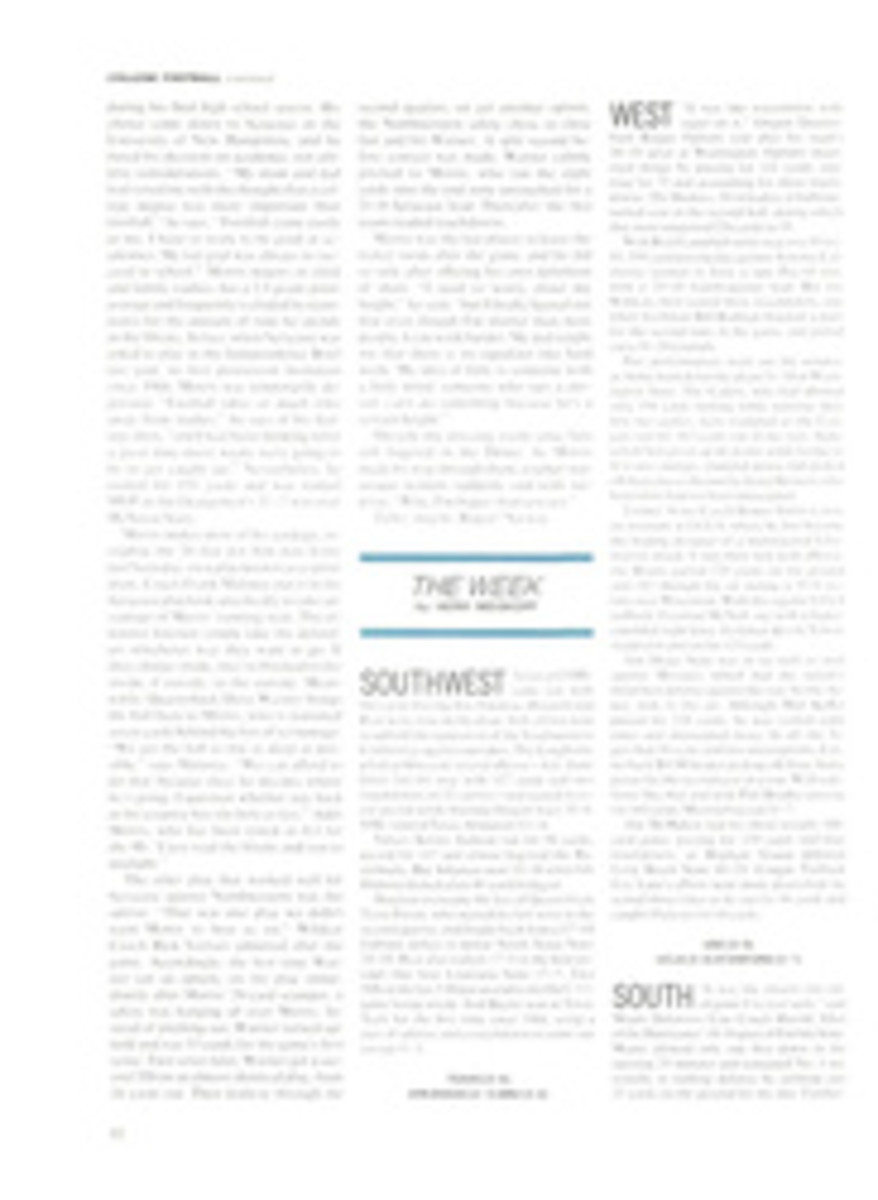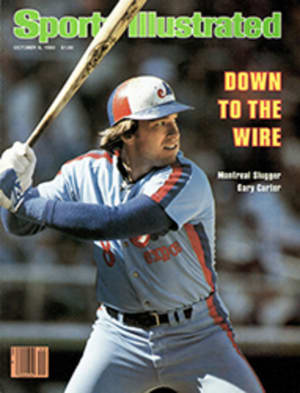
The score is now 24 for 24
It had been a long, long haul for both the winner, Freedom, and the challenger, Australia, but finally, on Sept. 25, under doleful, soggy skies pocked with southbound geese, the issue was laid to rest on Rhode Island Sound. When Freedom crossed the finish line to win the series 4-1, the America's Cup had been successfully defended for the 24th time. For the losing Aussies there was some consolation. In the 110 years since the Cup was first put up, challengers have won only eight of 85 races, and Australia this year got one of those wins from the best defender of them all.
Defending the America's Cup used to be a late-summer spectacle with a cavalier flair; it's now a hyper-serious, year-round business that exerts intense pressure not only on the crews and the taut yachts they sail, but also on the bankrolls of their backers. In 1958, when the Cup races were first sailed in 12-meter boats, Easterner, one of the three craft built specifically to defend that year, didn't go into the water until three months before the challenge. Weatherly, a rival only a month older than Easterner, almost totaled her bow on a breakwater while being towed out for her first trial run. Why? Because some dumb crumb-bum had linked up her rudder backward. Sloppy, sloppy, indeed, but that's the way it was back in the good old carefree days when a whole Cup campaign cost less than half a million.
No way that could've happened to this year's winner, Freedom. To earn the right to defend, Freedom sailed 408 miles in 47 races this summer, beating her U.S. rivals, Clipper and Courageous, by a cumulative score of 43 to four, But that impressive performance was only a small part of her pre-defense activities. Freedom first went in the water on May 9, 1979. In the 16 months between her commissioning and her first meeting with Australia, she sailed almost 250 days—roughly 10,000 miles—against her stable-mate, Enterprise, In that same span, Freedom tested and retested, cut and re-cut 77 different sails. The whole two-boat extravaganza cost about $2 million.
In contrast, this year's loser, Australia, spent only about $1.3 million, tried only about two thirds as many sails and got in only about two thirds as much sailing, most of it in loneliness. None of the other prospective challengers she defeated—France 3, Sverige of Sweden and Lion-heart of England—was her equal, and neither was her trial horse back home, the old challenger Gretel II. In sum, measured in terms of money or time or competition, Freedom had about a 35% edge, and that explains in part—but only in part—why the Cup still sits in the New York Yacht Club.
At the start of this year's series it indeed looked as if Freedom, like so many Yankee defenders before, would win in four straight. For the first half mile of the first race the boats marched along on a starboard tack together, Freedom high and climbing higher, and when Australia went over to port, she couldn't cross Freedom and had to tack back away. Right there the race was over—and seemingly the series as well.
It might have been a shutout, but the Aussies are restless sorts who don't enjoy losing the same way twice. In the foreign trials, Lionheart had used a new-fangled bendy mast that increased her mainsail area without penalty and also improved its efficiency. Taken by the idea, the Aussies in the early summer started building such a mast secretly in a warehouse in a dowdy section of the Newport waterfront. Was it too much to try so late? It certainly seemed so. When Australia's mainsails were first recut to accommodate the new configuration, they looked like bed sheets flapping in the air. The mast wasn't stepped until a week before the series against Freedom was to begin, and no sooner was it in place than the many gremlins that had pestered Australia during August reappeared in force. In the last crucial week that should have been spent training and evaluating sails, the Aussies had to take the mast out of their boat four times to repair or rebuild this or that. Gazing up at the complexity of struts and shrouds that bolster the springy upper section of the mast, Ben Lexcen, the Australian who designed both the spar and the hull, observed, "If it doesn't work as a mast with all those wires, it should make a good antenna. When the racing is over, we'll simply turn the whole bloody boat into a radio station." Although the bendy mast seemed unworkable for a half dozen reasons, the challengers remained loyal to it, and for a brief time their stubbornness seemed to be paying off. In the second race, after trailing Freedom around four marks, Australia took a slight flyer downwind in sagging air that was to her liking. She was well ahead when the time limit of five hours, 15 minutes expired.
When the race was resailed the next day, Australia was able to cross Freedom's bow 19 minutes after the starting gun. In the 22 years that the Cup has been contested in 12-meter boats, it was the first time a challenger had led at the first mark. Over the next three legs Australia increased her lead to 46 seconds and then blew it downwind to trail by 21 seconds as the boats headed back upwind to the finish. Halfway up that final leg Freedom had more than a minute lead as the wind began to drop with the setting sun. Then Australia began creeping up and 40 minutes along the leg she crossed Freedom by four lengths. At the end she had beaten the time limit by eight minutes and Freedom by 28 seconds. The game was tied, one-all.
During the summer, as Freedom's Dennis Conner, the almost infallible skipper, and his seemingly unbreakable boat proceeded ever onward, wishful thinkers—some partial to other boats and some merely craving the excitement of an upset—speculated that if anyone were to beat Conner two or three straight, he might come apart. Winning is certainly Conner's overriding obsession, whether at the helm of a boat or behind a pinball machine. But Conner has occasionally lost big and walked away, sometimes sulking, but always intact. He had come into competitive sailing through the back door, hat in hand. He had served a long apprenticeship, crewing for other skippers around the buoys and in ocean races. He had been 27 years old before he had a competitive boat of his own—a secondhand Star that had almost outlived its time. One year after acquiring it, he won the Star world championship, in many ways the classiest class competition of them all. From then till now he has been a very consistent winner in boats large and small. Crumble under pressure? Unlikely.
But after Australia's surprising win in the second race, the gremlins changed camps. They descended on Freedom as if they were intent on testing Conner's mettle. In the third race, after leading Australia by 46 seconds around the first mark, Freedom's spinnaker came apart on the reach, compelling Conner's fore-deck man, Lexi Gahagan, to go up the mast twice to clean up the mess. By the time Freedom finished the reaches, her lead was down to 20 seconds. On the second windward leg she was once again moving out when her jib split from luff to leech. While she was rounding the next mark, a wave washed across her deck, sweeping the spinnaker that was ready for hoisting into the water. In the subsequent confusion on the leeward leg, the topping lift was mistakenly hooked up inside the spinnaker halyard. And, because the topping lift wasn't secured, the spinnaker pole went over one side and half of a jib over the other, and the spinnaker wrapped itself around the head stay. Although during the worst of it their slapstick antics were worthy of Abbott and Costello, the Freedom crew recalls Conner opening his mouth only twice. If he was coming apart in the face of disaster, he was doing so quietly. In fact, by covering Australia well on the leg to the finish, Conner actually salvaged a victory out of the procession of mishaps. "On the beat to windward," he later said, "we had no problems. We had used our quota. There wasn't much else that could go wrong." In the final two races, in medium winds, Freedom beat Australia by margins of more than three minutes. So it ended as it always has.
From week to week on the docks of the contenders, foreign and domestic, the talk was of sails—ordinary Dacron sails, Mylar sails, sails of interwoven Dacron and Kevlar and Kevlar-Mylar sails. Sails, sails and still more sails. To take each team at its word, the fortunes of its boat would surely turn as soon as it received a still newer sail made of macerated rice paper or recycled Dixie cups.
So great was the chatter about sail-power that it somewhat obscured the fact that seven different hulls had a part in the long competition. And it is very likely that hull design was a more critical factor. Sails can be recut; remodeling a hull takes time and costs a bundle. Since 1958 eight different naval architects have created prospective defenders of the Cup. Five of the six hulls finally selected to defend in the eight campaigns were the products of Olin Stephens and his assistants. Before Australia and Freedom met, each of the seven designers involved this year was asked in a private poll to rank the designs of his six rivals. Stephen's Freedom won going away. Clipper, the boat that finished second in the U.S. eliminations, also stood second in the poll. Australia, the challenger, was third. Considering his record on the racecourse and his ranking among his colleagues, Stephens must be doing something right.
The prospect of winning a Cup that has never been won by a challenger is probably what keeps challengers coming back for more. Whatever the reason, there are already a half dozen foreign syndicates laying plans for a try in 1983. In the past many of the boats involved in Cup competition have had lofty names like Resolute, Endeavour, Sceptre, Valkyrie, Intrepid, Sovereign and Courageous. For a change of luck, a challenger of the future might consider something more to the point. In view of how things have been going for the past 110 years, the most fitting name for any foreign boat would be Don Quixote. It's that kind of quest, that kind of dream.
PHOTO
Australia's bendy mast gave her extra sail area but created some tricky problems for her crew.
PHOTO
Freedom's performance suited Conner to a T.

